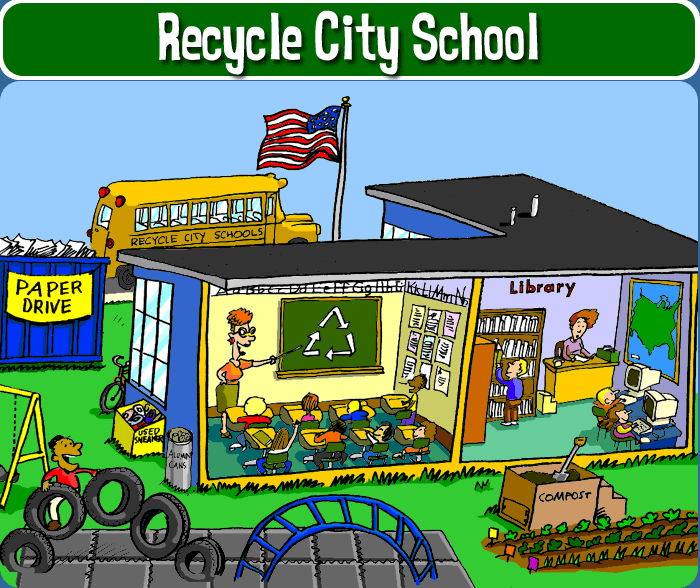
As a regular part of the school day, Recycle City students learn about the three R's—reduce, reuse, and recycle—from Miss Redux.
Pop inside the classroom to learn more. Then, go around the school to see what's else they're doing to help.

As a regular part of the school day, Recycle City students learn about the three R's—reduce, reuse, and recycle—from Miss Redux.
Pop inside the classroom to learn more. Then, go around the school to see what's else they're doing to help.

Can you identify...more
three ways to reduce waste in your school? You can also create new school recycling and composting signs!

Recycle City students are holding a paper recycling drive to pay for a class trip. (For every ton of paper they recycle, the students save 17 trees from being cut down to make new paper.) Besides bringing used paper from home, they turn in the writing, drawing, and computer paper they use at school.
To kick off the drive, students set up receptacles in the back of every classroom to collect used white paper from homework or computer printouts. At the end of the day, the paper is collected and put in a large, covered bin in the schoolyard. When the bin is full, students take the paper to a high-grade paper buyer who recycles it.
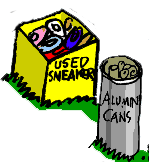
The students are collecting old sneakers in another bin. Really old sneakers are sent to a sneaker maker so the rubber can be removed and melted down for reuse. Shoes that are still in good condition are donated to kids who need them.
Recycle City students also operate an ongoing recycling program that collects cans and glass bottles used at lunch time. In addition to regular collection sites inside, they set up an easy drop-off point in the school parking lot to collect donations from parents and the community. The money collected from this program helped pay for the computers in the school library.
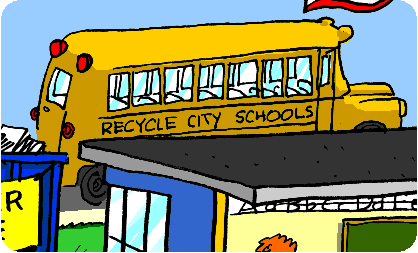
By taking the bus to school, instead of cars, students help save fuel and reduce both traffic and air pollution. (When the weather is good, students who don't live too far away ride their bikes, which is a fun, healthy, and very cool way to get to school.)
Recycle City schools switched over to electric buses that plug in to charge up instead of using gas. These battery-powered buses can drive more than 100 miles on a single charge, which is much more than they need to drive every day. The Recycle City school bus drivers like the electric buses because they cause less pollution, they can plug them in instead of waiting in line for gas, and they are much easier and less costly to maintain.
The government and businesses are working to shift to renewable energy power sources and improve battery recycling to make electric buses even better for the planet.
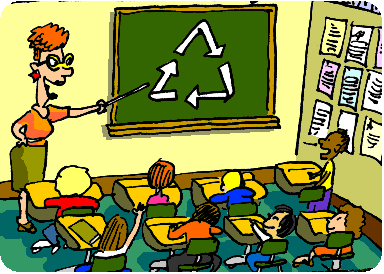
In her lessons, Miss Redux always teaches the three R's in the same order: reduce, reuse, and recycle.
Reduce always comes first because reducing what we use and what we waste means using fewer natural resources and less energy. Less waste also means less land is needed for burying waste in landfills. Ways to reduce waste include purchasing goods that use less packaging, sharing or renting things (like carpet cleaners) that aren't needed regularly instead of buying them, and buying household cleansers that do not contain hazardous ingredients.
Reuse comes second because reusing items—using them twice or many times instead of just once—keeps them from becoming waste. Some ideas for reuse include using glass or metal containers after they're empty, or taking a cloth sack to the store when you shop (you don't need a bag, and you can use the sack again the next time).
Here at the school, many kids bring their lunches in reusable containers, which they can wash and use over and over again, instead of wrapping their food in plastic wrap that they throw away every day. Meanwhile, some businesses have donated their old computers to the school for reuse, and the local theatre company donates its used sets and costumes to the Drama Club.
Recycle comes third, but not last. Recycling—converting used items back into raw materials, then making new products with them—conserves our valuable natural resources and reduces the need to put so much waste into our landfills. Many schools have started recycling programs that help raise money for needed items. And many items they buy can be made from recycled materials—such as paper, notebooks, playground equipment, furniture, and carpet.
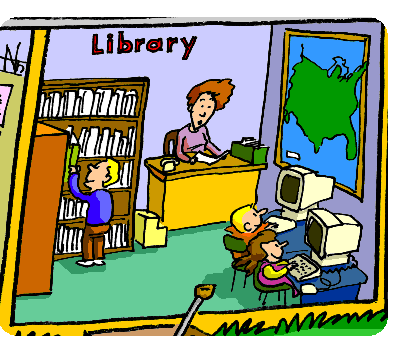
The school library is the best place to learn about reuse, because that's what a library is all about. Because these books can be borrowed, read, and returned, their reuse saves thousands of trees.
Rebuilt computers, purchased from the local Mr. Fix-it Shop with money raised from the students' recycling drives, also help preserve our natural resources. Many students use the computers to do their schoolwork, saving paper by making all of their changes before printing out the final copy.
With computers, students can also use the Internet to read the local newspaper and search for information from universities, research centers and databases around the world. Getting information online saves paper, and reduces energy consumption and pollution by eliminating the need to drive from place to place to get what they need.
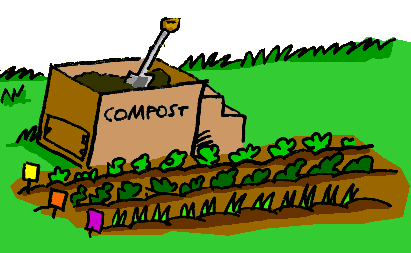
A compost bin returns plant and some food materials to the soil through decomposition, so it can be used as a natural soil additive, called compost. Compost improves soil texture, increases the ability of soil to absorb air and water, suppresses weed growth, and reduces the need to add chemicals and pesticides to plants.
Recycle City students have set up a compost bin to reuse leaves, grass clippings, and even some kinds of food from the cafeteria. They put it on a level area of the schoolyard that doesn't get a lot of sunlight. Then they started the pile with about a four-inch layer of leaves, loose soil, and grass clippings. They decided to include food scraps as part of the project, so they added things like vegetables, egg shells and coffee grounds.
Students take turns tending the bin. They've found out that many kinds of foods can be composted, including vegetable trimmings, tea bags, apple and potato peels, even old bread (no mayonnaise!). They make sure no one throws in meat scraps, dairy foods, or fats and greases (like mayonnaise), because those things attract pests, like mice and rats.
In dry weather, they sprinkle the pile with some water, but not enough to get it too soggy. Then, every few weeks, one of them turns the pile with a pitchfork to let the air circulate and distribute the moisture. Sometimes the compost pile heats up, and some students have found worms in the pile—both are part of the decomposition process.
After about six months, the compost looks dark and crumbly with an even texture. When it looks like that, it's ready to be spread in the school garden and around shrubbery in the schoolyard. A couple of biology classes also use the compost for potting soil to grow plants.
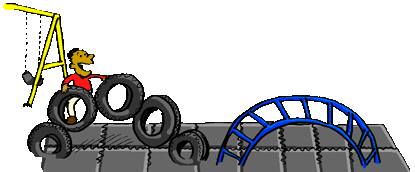
The Recycle City playground uses recyclable materials for play equipment and to make the playground safe. Old rubber tires (the kind without steel belts inside) were made into a recreation area where kids can crawl in and out and test their agility on an obstacle course. The safety mat covering of the playground itself was made from tires that were shredded and melted down. Today many products, including athletic, sports, and recreational rubber ground covers, are made from old tires.

